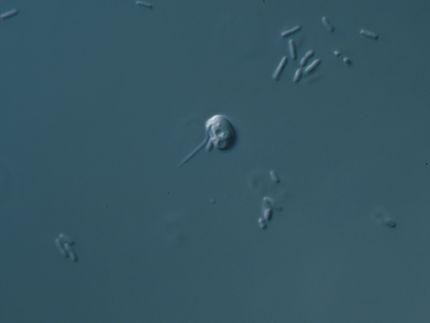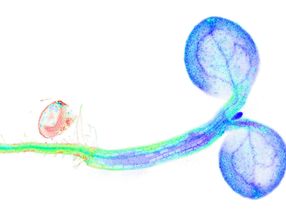No excess baggage: Antarctic insect's genome, newly sequenced, is smallest to date
Researchers suggest bare-bones genome is adaptation to deep freeze
Scientists who sequenced the genome of the Antarctic midge suspect the genome's small size – the smallest in insects described to date – can probably be explained by the midge's adaptation to its extreme living environment.
The midge is a small, wingless fly that spends most of its two-year larval stage frozen in the Antarctic ice. Upon adulthood, the insects spend seven to 10 days mating and laying eggs, and then they die.
Its genome contains only 99 million base pairs of nucleotides, making it smaller than other tiny reported genomes for the body louse (105 million base pairs) and the winged parasite Strepsiptera (108 million base pairs), as well as the genomes of three other members of the midge family.
The midge genome lacks many of the segments of DNA and other repeat elements that don't make proteins, which are found in most animal genomes. The lack of such "baggage" in the genome could be an evolutionary answer to surviving the cold, dry conditions of Antarctica, said senior author David Denlinger, Distinguished Professor of entomology and of evolution, ecology and organismal biology at The Ohio State University.
"It has really taken the genome down to the bare bones and stripped it to a smaller size than was previously thought possible," Denlinger said. "It will be interesting to know if other extremophiles – ticks, mites and other organisms that live in Antarctica – also have really small genomes, or if this is unique to the midge. We don't know that yet."
Once called "junk DNA," these DNA segments and repeat elements in genomes are now known to have important functions related to gene regulation. They also are implicated in many disease processes. So could a bare-bones genome be the secret to midge survival?
"We don't yet understand what the implications are of not having all that extra baggage. It seems like a good thing in many ways, but organisms do get some beneficial things from this baggage, too," Denlinger said.
The midge genome is small in architecture but not in the number of genes, the researchers noted: The Antarctic midge genome, like genomes of other flies, contains about 13,500 functional genes.
The research is published in the journal Nature Communications.
Denlinger has studied the Antarctic midge for many years, zeroing in on the insect's unusual stress responses, including the activation of heat-shock proteins. Most animals turn on these proteins only when they're under acute stress – particularly when they're exposed to extremely high or low temperatures – and quickly turn them off when the stress has passed. But heat-shock proteins are activated constantly during the Antarctic midge's larval stage – a trait scientists believe is linked to its survival in harsh conditions.
Denlinger's lab has cloned and studied several genes connected to these proteins. "But sequencing the genome gives us access to a broader suite of many other closely related genes that we didn't have access to before," he said.
The research also reveals a host of genes called aquaporins, which are involved in water transport into and out of cells. These genes and the proteins they make are also players in the midge's survival in Antarctica. Most insects can survive losing about 20 percent of the water in their bodies' cells, but these midges tolerate a loss of up to 70 percent of their water.
"They look like dried up little raisins, and when we pour water on them they plump up and go on their merry way," Denlinger said. "Being able to survive that extreme level of dehydration is one of the keys to surviving low temperatures. This midge has some mechanism that enables it to both be dehydrated and stay alive, with its cells functioning normally."
In the Antarctic ecosystem, these midges eat bacteria and algae as well as nitrogen-rich waste produced by penguins. No other species preys on them, and Denlinger's lab has not identified any pathogens that might endanger their lives.
But they do have this incredible ability to survive a significant threat: the dry, deep freeze and high levels of ultraviolet radiation of Antarctica, and precisely how they do that remains, at least in part, a mystery. Though the survival question alone drives Denlinger's work, the research could have implications for humans in the long term by revealing how human tissue harvested for transplant could be sustained in cold storage.
"How does the midge regulate its physiology so it can survive in those kinds of low temperature extremes?" he said. "Having heat-shock proteins turned on all the time could offer some clues about how you might be able to preserve other tissues for a long time. Midges have figured out how to do that, so that means it is possible for some animal tissues to survive freezing temperatures."



















![[Fe]-hydrogenase catalysis visualized using para-hydrogen-enhanced nuclear magnetic resonance spectroscopy](https://img.chemie.de/Portal/News/675fd46b9b54f_sBuG8s4sS.png?tr=w-712,h-534,cm-extract,x-0,y-16:n-xl)






































